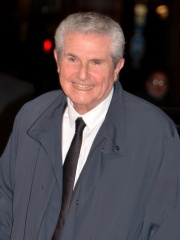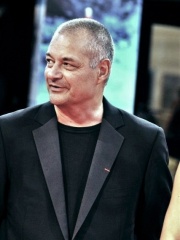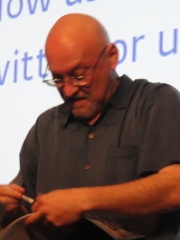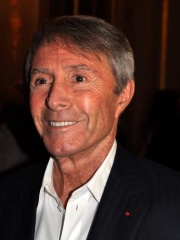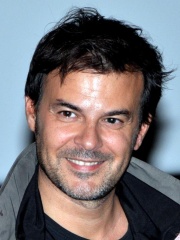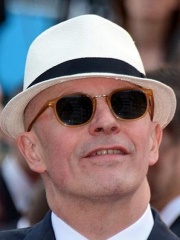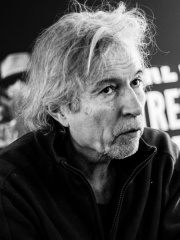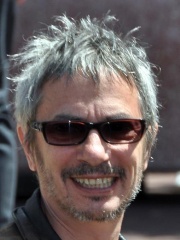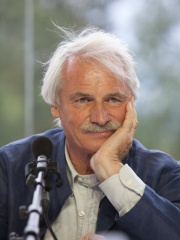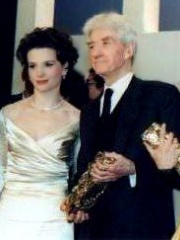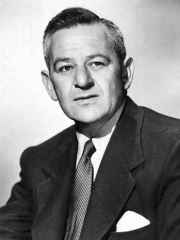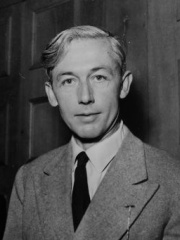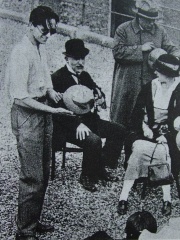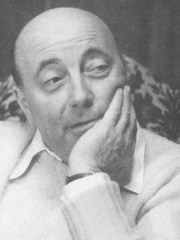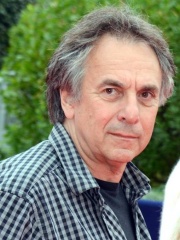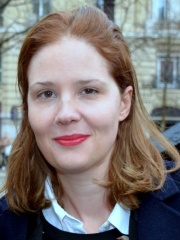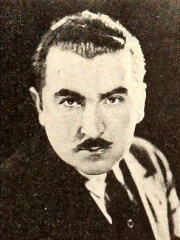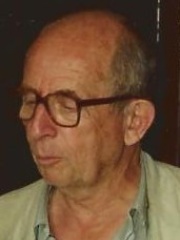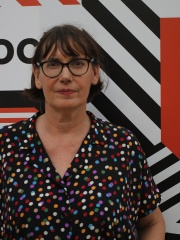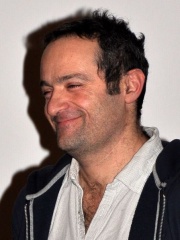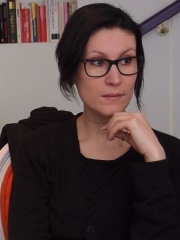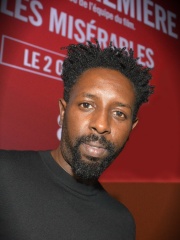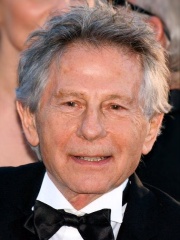
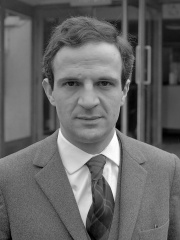
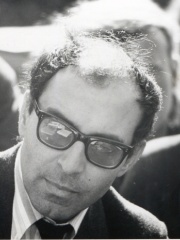
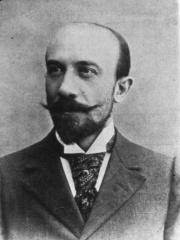
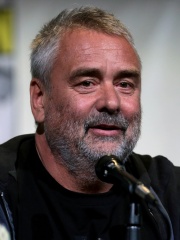
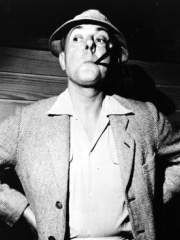
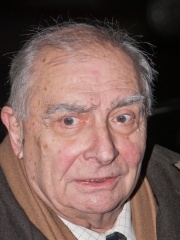
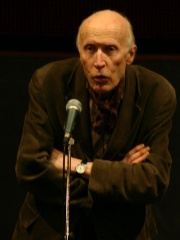
The Most Famous
FILM DIRECTORS from France
This page contains a list of the greatest French Film Directors. The pantheon dataset contains 2,041 Film Directors, 165 of which were born in France. This makes France the birth place of the 2nd most number of Film Directors.
Top 10
The following people are considered by Pantheon to be the top 10 most legendary French Film Directors of all time. This list of famous French Film Directors is sorted by HPI (Historical Popularity Index), a metric that aggregates information on a biography’s online popularity. Visit the rankings page to view the entire list of French Film Directors.

1. Roman Polanski (b. 1933)
With an HPI of 76.28, Roman Polanski is the most famous French Film Director. His biography has been translated into 89 different languages on wikipedia.
Raymond Roman Thierry Polański (né Liebling; born 18 August 1933) is a French and Polish film director, producer, screenwriter, and actor. He is the recipient of numerous accolades, including an Academy Award, two British Academy Film Awards, ten César Awards, two Golden Globe Awards, as well as the Golden Bear and a Palme d'Or. In 1977, Polanski was arrested for drugging and raping a 13-year-old girl. He pleaded guilty to the lesser charge of unlawful sex with a minor in exchange for a probation-only sentence. The night before his sentencing hearing in 1978, he learned that the judge would likely reject the proffered plea bargain, so he fled the U.S. to Europe, where he continued his career. He remains a fugitive from the U.S. justice system. Further allegations of abuse have been made by other women. Polanski's Polish Jewish parents moved the family from his birthplace in Paris back to Kraków in 1937. Two years later, the invasion of Poland by Nazi Germany started World War II, and the family found themselves trapped in the Kraków Ghetto. After his mother and father were taken in raids, Polanski spent his formative years in foster homes, surviving the Holocaust by adopting a false identity and concealing his Jewish heritage.Polanski's first feature-length film, Knife in the Water (1962), was made in Poland and was nominated for the United States Academy Award for Best Foreign Language Film. After living in France for a few years, he moved to the United Kingdom, where he directed his first three English-language feature-length films: Repulsion (1965), Cul-de-sac (1966), and The Fearless Vampire Killers (1967). In 1968, he moved to the United States and cemented his status in the film industry by directing the horror film Rosemary's Baby (1968). He made Macbeth (1971) in England and Chinatown (1974) back in Hollywood. His other critically acclaimed films include Tess (1979), The Pianist (2002) which won him the Academy Award for Best Director, The Ghost Writer (2010), Venus in Fur (2013), and An Officer and a Spy (2019). Polanski has made 23 feature films to date.In 1969, Polanski's pregnant wife, actress Sharon Tate, was murdered with four friends by members of the Manson Family.

2. François Truffaut (1932 - 1984)
With an HPI of 73.55, François Truffaut is the 2nd most famous French Film Director. His biography has been translated into 77 different languages.
François Roland Truffaut (UK: TROO-foh, TRUU-, US: troo-FOH; French: [fʁɑ̃swa ʁɔlɑ̃ tʁyfo]; 6 February 1932 – 21 October 1984) was a French filmmaker, actor, and critic. He is widely regarded as one of the founders of the French New Wave. With a career of more than 25 years, he is an icon of the French film industry. Truffaut's film The 400 Blows (1959) is a defining film of the French New Wave movement, and has four sequels: Antoine et Colette (1962), Stolen Kisses (1968), Bed and Board (1970), and Love on the Run (1979). Truffaut's 1973 film Day for Night earned him critical acclaim and several awards, including the BAFTA Award for Best Film and the Academy Award for Best Foreign Language Film. His other notable films include Shoot the Piano Player (1960), Jules and Jim (1962), The Soft Skin (1964), The Wild Child (1970), Two English Girls (1971), The Last Metro (1980), and The Woman Next Door (1981). He played one of the main roles in Steven Spielberg's Close Encounters of the Third Kind (1977). Truffaut wrote the book Hitchcock/Truffaut (1966), based on his interviews with film director Alfred Hitchcock during the 1960s. With his leading actress Claude Jade from three of his films he was engaged (1968) and with Fanny Ardant from his two last films François Truffaut lived together until his death. He was married from 1957 until 1964 with Madeleine Morgenstern.

3. Jean-Luc Godard (1930 - 2022)
With an HPI of 73.45, Jean-Luc Godard is the 3rd most famous French Film Director. His biography has been translated into 74 different languages.
Jean-Luc Godard (UK: GOD-ar, US: goh-DAR; French: [ʒɑ̃ lyk ɡɔdaʁ]; 3 December 1930 – 13 September 2022) was a French and Swiss film director, screenwriter, and film critic. He rose to prominence as a pioneer of the French New Wave film movement of the 1960s, alongside such filmmakers as François Truffaut, Agnès Varda, Éric Rohmer and Jacques Demy. He was arguably the most influential French filmmaker of the post-war era. According to AllMovie, his work "revolutionized the motion picture form" through its experimentation with narrative, continuity, sound, and camerawork. His most acclaimed films include Breathless (1960), Vivre sa vie (1962), Contempt (1963), Band of Outsiders (1964), Alphaville (1965), Pierrot le Fou (1965), Masculin Féminin (1966), Weekend (1967) and Goodbye to Language (2014).During his early career as a film critic for the influential magazine Cahiers du Cinéma, Godard criticised mainstream French cinema's "Tradition of Quality", which de-emphasised innovation and experimentation. In response, he and like-minded critics began to make their own films, challenging the conventions of traditional Hollywood in addition to French cinema. Godard first received global acclaim for his 1960 feature Breathless, helping to establish the New Wave movement. His work makes use of frequent homages and references to film history, and often expressed his political views; he was an avid reader of existentialism and Marxist philosophy, and in 1969 formed the Dziga Vertov Group with other radical filmmakers to promote political works. After the New Wave, his politics were less radical, and his later films came to be about human conflict and artistic representation "from a humanist rather than Marxist perspective."Godard was married three times, to actresses Anna Karina and Anne Wiazemsky, both of whom starred in several of his films, and later to his longtime partner Anne-Marie Miéville. His collaborations with Karina—which included such critically acclaimed films as Vivre sa vie (1962), Bande à part (1964) and Pierrot le Fou (1965)—were called "arguably the most influential body of work in the history of cinema" by Filmmaker magazine. In a 2002 Sight & Sound poll, Godard ranked third in the critics' top ten directors of all time. He is said to have "generated one of the largest bodies of critical analysis of any filmmaker since the mid-twentieth century." His work has been central to narrative theory and has "challenged both commercial narrative cinema norms and film criticism's vocabulary." In 2010, Godard was awarded an Academy Honorary Award.

4. Georges Méliès (1861 - 1938)
With an HPI of 72.52, Georges Méliès is the 4th most famous French Film Director. His biography has been translated into 72 different languages.
Marie-Georges-Jean Méliès (; French: [meljɛs]; 8 December 1861 – 21 January 1938) was a French magician, actor, and film director. He led many technical and narrative developments in the early days of cinema. Méliès was well known for the use of special effects, popularizing such techniques as substitution splices, multiple exposures, time-lapse photography, dissolves, and hand-painted colour. He was also one of the early filmmakers to use storyboards. His films include A Trip to the Moon (1902) and The Impossible Voyage (1904), both involving strange, surreal journeys somewhat in the style of Jules Verne, are considered among the most important early science fiction films, though their approach is closer to fantasy.
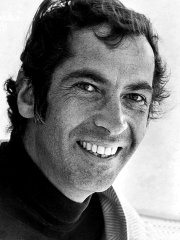
5. Roger Vadim (1928 - 2000)
With an HPI of 71.50, Roger Vadim is the 5th most famous French Film Director. His biography has been translated into 48 different languages.
Roger Vadim Plemiannikov (French: [ʁɔʒe vadim]; 26 January 1928 – 11 February 2000) was a French screenwriter, film director and producer, as well as an author, artist and occasional actor. His best-known works are visually lavish films with erotic qualities, such as And God Created Woman (1956), Blood and Roses (1960), Barbarella (1968), and Pretty Maids All in a Row (1971).

6. Luc Besson (b. 1959)
With an HPI of 68.46, Luc Besson is the 6th most famous French Film Director. His biography has been translated into 65 different languages.
Luc Paul Maurice Besson (French: [lyk bɛsɔ̃]; born 18 March 1959) is a French filmmaker. He directed or produced the films Subway (1985), The Big Blue (1988), and La Femme Nikita (1990). Associated with the Cinéma du look film movement, he has been nominated for a César Award for Best Director and Best Picture for his films Léon: The Professional (1994) and The Messenger: The Story of Joan of Arc (1999). He won Best Director and Best French Director for his sci-fi action film The Fifth Element (1997). He wrote and directed the 2014 sci-fi action film Lucy and the 2017 space opera film Valerian and the City of a Thousand Planets. In 1980, near the beginning of his career, he founded his own production company, Les Films du Loup, later renamed Les Films du Dauphin. It was superseded in 2000 when he co-founded EuropaCorp with longtime collaborator Pierre-Ange Le Pogam. As writer, director, or producer, Besson has been involved in the creation of more than 50 films.

7. Jacques Tati (1907 - 1982)
With an HPI of 67.55, Jacques Tati is the 7th most famous French Film Director. His biography has been translated into 48 different languages.
Jacques Tati (French: [tati]; born Jacques Tatischeff, pronounced [tatiʃɛf]; 9 October 1907 – 5 November 1982) was a French mime, filmmaker, actor and screenwriter. In an Entertainment Weekly poll of the Greatest Movie Directors, he was voted the 46th greatest of all time (out of 50), although he directed only six feature-length films. Tati is perhaps best known for his character Monsieur Hulot, featured in Les Vacances de Monsieur Hulot (1953), Mon Oncle (1958), Playtime (1967) and Trafic (1971). Playtime ranked 23rd in the 2022 Sight and Sound critics' poll of the greatest films ever made.As David Bellos puts it, "Tati, from l'Ecole des facteurs to Playtime, is the epitome of what an auteur is (in film theory) supposed to be: the controlling mind behind a vision of the world on film".

8. Claude Chabrol (1930 - 2010)
With an HPI of 67.51, Claude Chabrol is the 8th most famous French Film Director. His biography has been translated into 55 different languages.
Claude Henri Jean Chabrol (French: [klod ʃabʁɔl]; 24 June 1930 – 12 September 2010) was a French film director and a member of the French New Wave (nouvelle vague) group of filmmakers who first came to prominence at the end of the 1950s. Like his colleagues and contemporaries Jean-Luc Godard, François Truffaut, Éric Rohmer and Jacques Rivette, Chabrol was a critic for the influential film magazine Cahiers du cinéma before beginning his career as a film maker. Chabrol's career began with Le Beau Serge (1958), inspired by Hitchcock's Shadow of a Doubt (1943). Thrillers became something of a trademark for Chabrol, with an approach characterized by a distanced objectivity. This is especially apparent in Les Biches (1968), La Femme infidèle (1969), and Le Boucher (1970) – all featuring Stéphane Audran, who was his wife at the time. Sometimes characterized as a "mainstream" New Wave director, Chabrol remained prolific and popular throughout his half-century career. In 1978, he cast Isabelle Huppert as the lead in Violette Nozière. On the strength of that effort, the pair went on to others including the successful Madame Bovary (1991) and La Cérémonie (1995). Film critic John Russell Taylor has stated that "there are few directors whose films are more difficult to explain or evoke on paper, if only because so much of the overall effect turns on Chabrol's sheer hedonistic relish for the medium...Some of his films become almost private jokes, made to amuse himself." James Monaco has called Chabrol "the craftsman par excellence of the New Wave, and his variations upon a theme give us an understanding of the explicitness and precision of the language of the film that we don't get from the more varied experiments in genre of Truffaut or Godard."

9. Éric Rohmer (1920 - 2010)
With an HPI of 67.41, Éric Rohmer is the 9th most famous French Film Director. His biography has been translated into 48 different languages.
Jean Marie Maurice Schérer or Maurice Henri Joseph Schérer, known as Éric Rohmer (French: [eʁik ʁomɛʁ]; 21 March 1920 – 11 January 2010), was a French film director, film critic, journalist, novelist, screenwriter, and teacher. Rohmer was the last of the post-World War II French New Wave directors to become established. He edited the influential film journal Cahiers du cinéma from 1957 to 1963, while most of his colleagues—among them Jean-Luc Godard and François Truffaut—were making the transition from critics to filmmakers and gaining international attention. Rohmer gained international acclaim around 1969 when his film My Night at Maud's was nominated at the Academy Awards. He won the San Sebastián International Film Festival with Claire's Knee in 1971 and the Golden Lion at the Venice Film Festival for The Green Ray in 1986. Rohmer went on to receive the Venice Film Festival's Career Golden Lion in 2001. After Rohmer's death in 2010, his obituary in The Daily Telegraph described him as "the most durable filmmaker of the French New Wave", outlasting his peers and "still making movies the public wanted to see" late in his career.
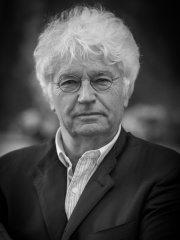
10. Jean-Jacques Annaud (b. 1943)
With an HPI of 66.72, Jean-Jacques Annaud is the 10th most famous French Film Director. His biography has been translated into 50 different languages.
Jean-Jacques Annaud (French: [ʒɑ̃ ʒak ano]; born 1 October 1943) is a French film director, screenwriter and producer. He directed Quest for Fire (1981), The Name of the Rose (1986), The Bear (1988), The Lover (1992), Seven Years in Tibet (1997), Enemy at the Gates (2001), Black Gold (2011), and Wolf Totem (2015). Annaud has received numerous awards for his work, including five César Awards, one David di Donatello Award, and one National Academy of Cinema Award. Annaud's first film, Black and White in Color (1976), received an Academy Award for Best Foreign Language Film.
People
Pantheon has 179 people classified as French film directors born between 1860 and 1983. Of these 179, 80 (44.69%) of them are still alive today. The most famous living French film directors include Roman Polanski, Luc Besson, and Jean-Jacques Annaud. The most famous deceased French film directors include François Truffaut, Jean-Luc Godard, and Georges Méliès. As of April 2024, 14 new French film directors have been added to Pantheon including Bruno Nuytten, Justine Triet, and Christian de Chalonge.
Living French Film Directors
Go to all RankingsRoman Polanski
1933 - Present
HPI: 76.28
Luc Besson
1959 - Present
HPI: 68.46
Jean-Jacques Annaud
1943 - Present
HPI: 66.72
Claude Lelouch
1937 - Present
HPI: 63.69
Jean-Pierre Jeunet
1953 - Present
HPI: 62.89
Frank Darabont
1959 - Present
HPI: 59.27
Francis Veber
1937 - Present
HPI: 57.70
François Ozon
1967 - Present
HPI: 56.79
Jacques Audiard
1952 - Present
HPI: 56.71
Jacques Doillon
1944 - Present
HPI: 56.63
Leos Carax
1960 - Present
HPI: 56.51
Yann Arthus-Bertrand
1946 - Present
HPI: 56.48
Deceased French Film Directors
Go to all RankingsFrançois Truffaut
1932 - 1984
HPI: 73.55
Jean-Luc Godard
1930 - 2022
HPI: 73.45
Georges Méliès
1861 - 1938
HPI: 72.52
Roger Vadim
1928 - 2000
HPI: 71.50
Jacques Tati
1907 - 1982
HPI: 67.55
Claude Chabrol
1930 - 2010
HPI: 67.51
Éric Rohmer
1920 - 2010
HPI: 67.41
Alain Resnais
1922 - 2014
HPI: 66.66
William Wyler
1902 - 1981
HPI: 66.55
Robert Bresson
1901 - 1999
HPI: 65.36
René Clair
1898 - 1981
HPI: 65.31
Marcel Carné
1906 - 1996
HPI: 64.58
Newly Added French Film Directors (2024)
Go to all RankingsBruno Nuytten
1945 - Present
HPI: 52.12
Justine Triet
1978 - Present
HPI: 48.90
Christian de Chalonge
1937 - Present
HPI: 46.32
George Fitzmaurice
1885 - 1940
HPI: 46.27
Jacques Rouffio
1928 - 2016
HPI: 45.82
Diane Kurys
1948 - Present
HPI: 45.54
Jacques Baratier
1918 - 2009
HPI: 45.28
Jean-François Richet
1966 - Present
HPI: 42.18
Lucile Hadžihalilović
1961 - Present
HPI: 41.92
Cédric Kahn
1966 - Present
HPI: 39.87
Ovidie
1980 - Present
HPI: 38.51
Ladj Ly
1980 - Present
HPI: 34.91
Overlapping Lives
Which Film Directors were alive at the same time? This visualization shows the lifespans of the 25 most globally memorable Film Directors since 1700.

